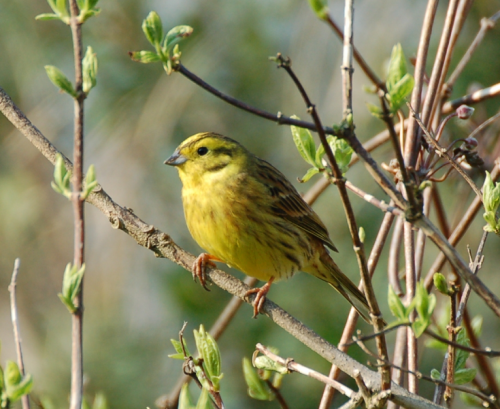This striking canary-like bird is a similar size to a corn bunting, and holds territories like its chubby bunting relative. It has an unmistakable ‘little-bit-of-bread-but-no cheeeeese’ song, which can be heard from some distance, and their bright colour makes them easy to spot on overhead wires, fence posts or bushes. To identify numbers of singing male territories:
- You’ll need an Ordnance Survey grid map, farm field map, and binoculars. Learn the song, but note, they sometimes drop the ‘cheeeeese!’
- To survey a landscape-scale area, it’s best to design permanent transects that you walk twice annually: once in May and once in June. Male yellowhammers will hold territories right through until August.
- Using the Ordnance Survey 1-km grid, select alternate squares and identify two 1-km routes running roughly north-south or east-west within each square.
- Choose a sunny early morning with little wind, and record the date and time. Walk the transects at a steady pace, stopping to scan prominent places ahead with the binoculars and listening. Note down the male territories on the map.
- For a smaller farm, walk the whole area listening/watching for male yellowhammer. You can sometimes cover a large area (>10ha) of open farmland by observing from one point at a time, as they are so distinctive.
- Use the maximum number of singing males across the two visits as the measure of breeding territories. Repeat surveys every year, to identify areas of high and low density and monitor numbers of territories. Target management accordingly.
Multiple species transects: if you have other waders/corn buntings/yellowhammers on your cluster priority list, you could survey them at the same time.
Yellowhammer male on perch © Peter Thompson GWCT

